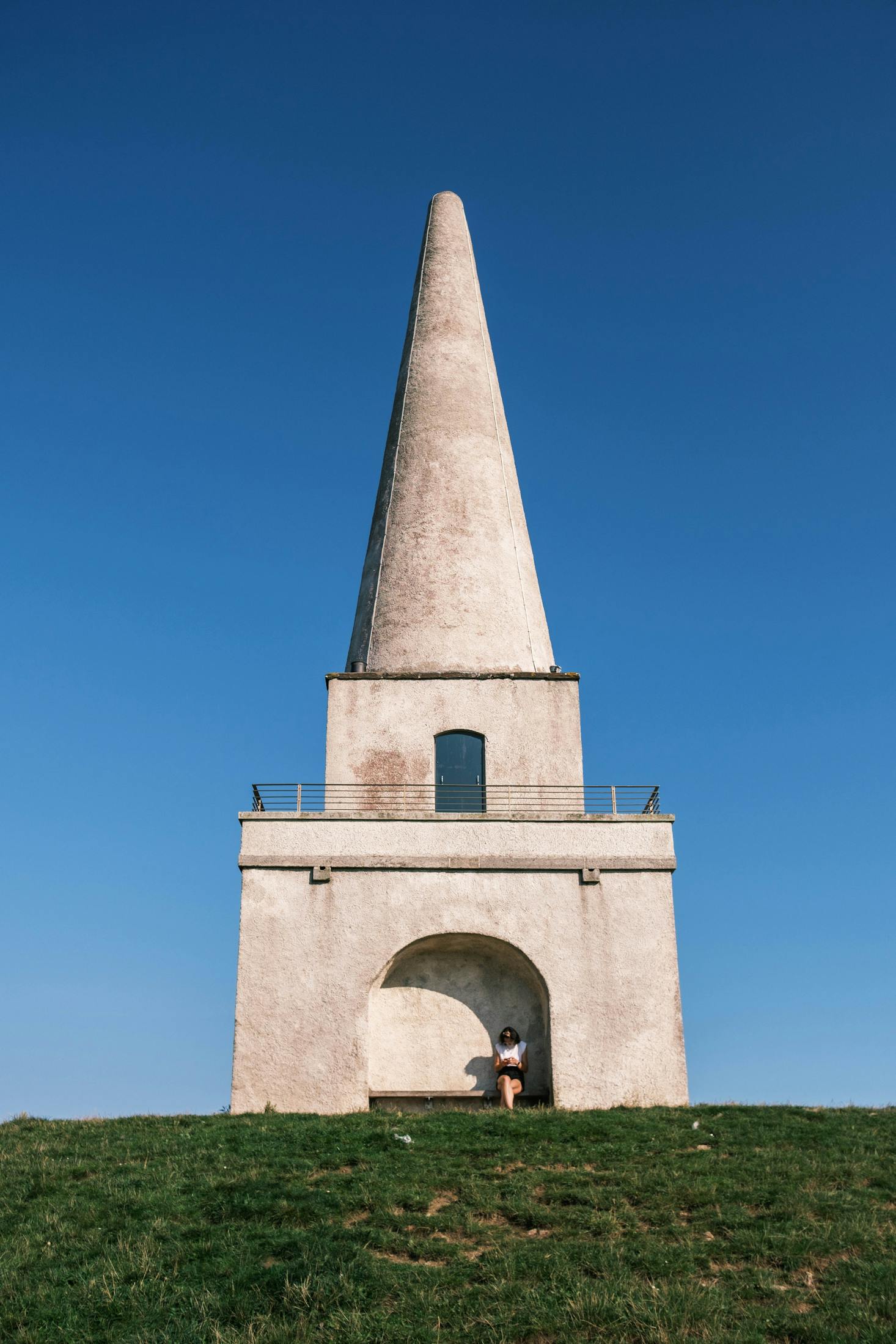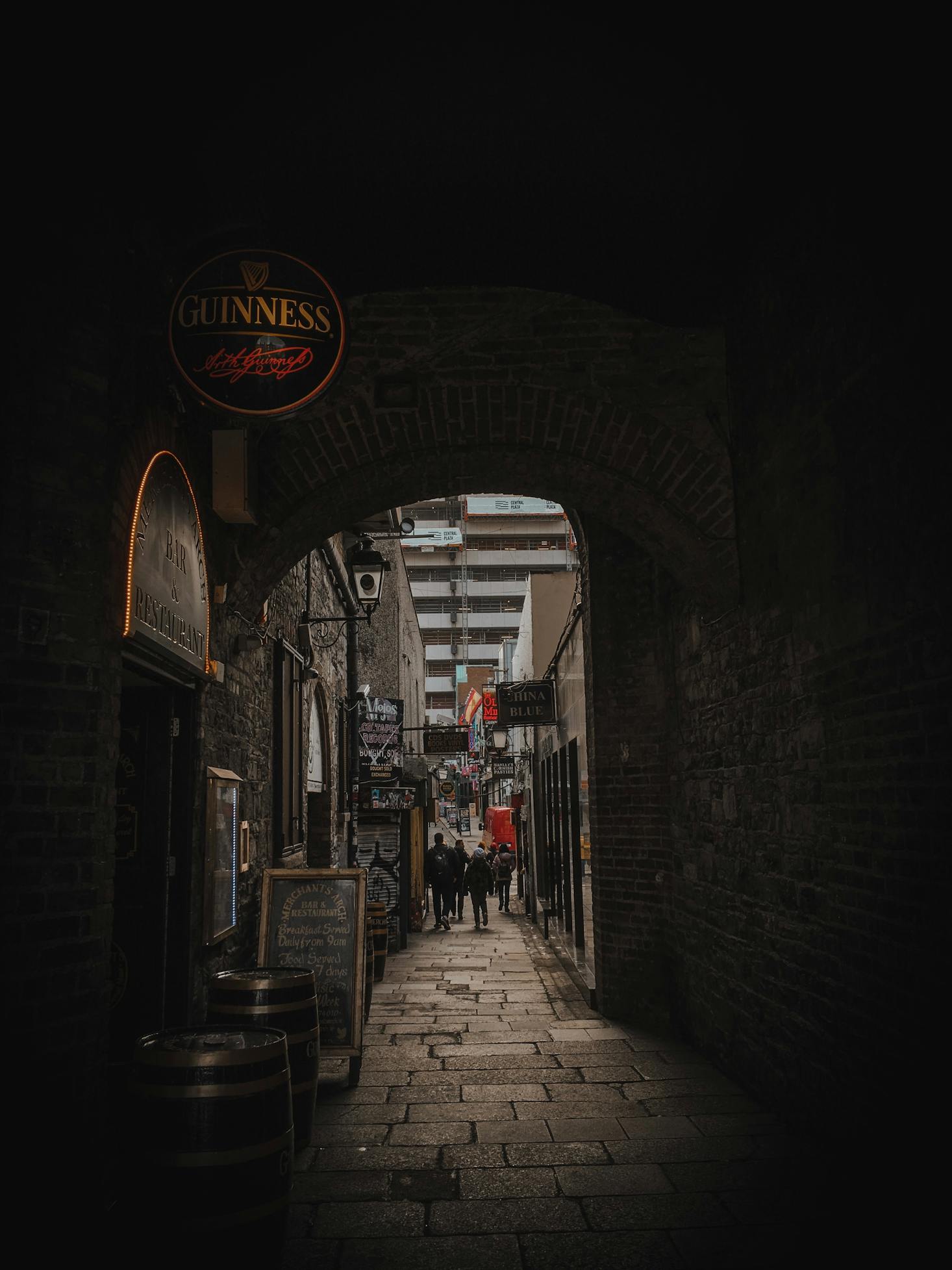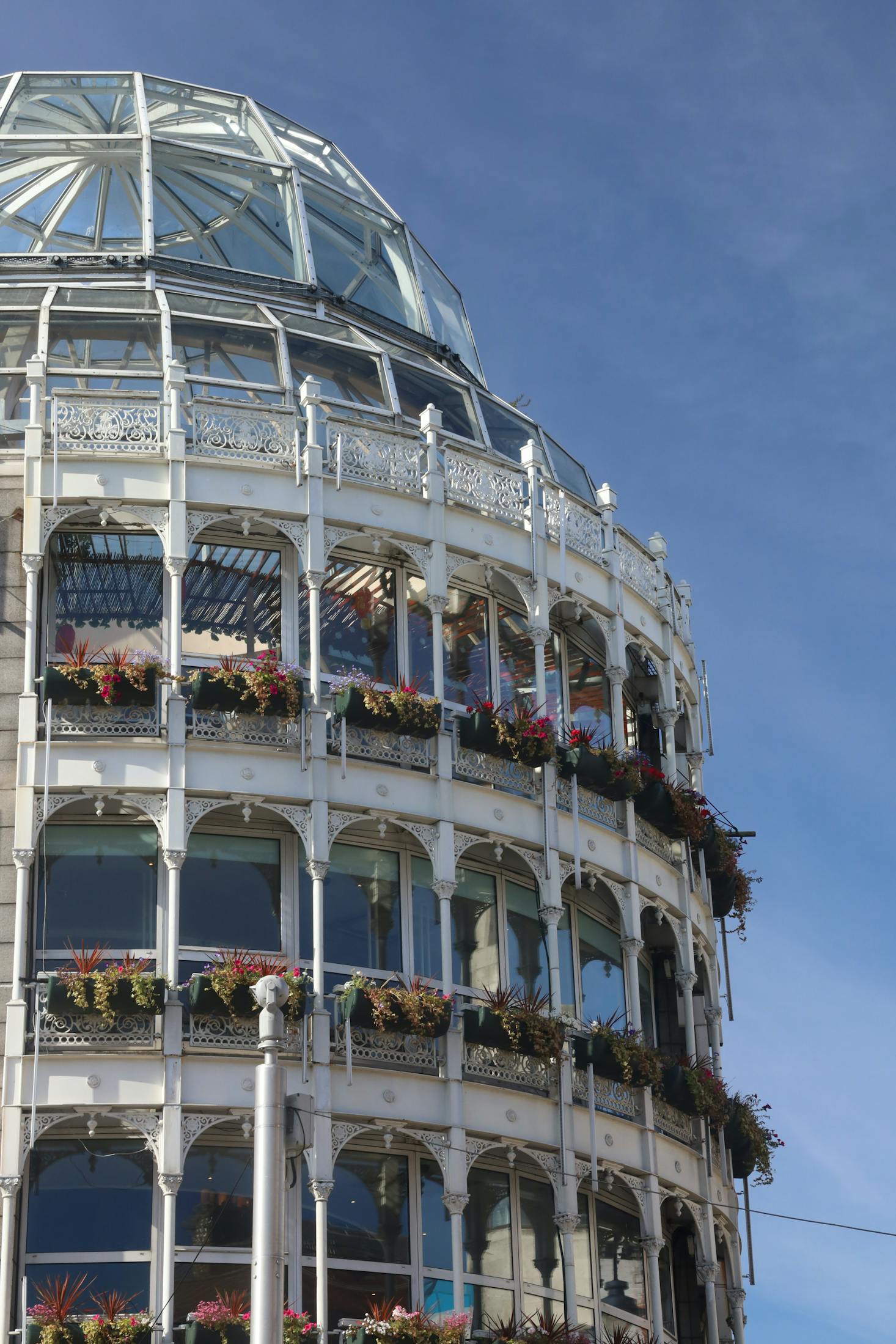The Best Time to Visit Dublin 2024: the Ultimate Guide

When you're attempting to work out when the best time to go to Dublin is, or even what's the best month to visit Ireland, because of the weather, good luck. To get a rough idea of future forecasts, you could study Irish farmer's almanacs from the last ten years before you go or, if to be more up to date, scroll through online weather reports until your fingers go numb.
Whatever information you come across might help you make a guesstimate and that's about it. As far as considering the Irish weather as a factor in planning your visit to Dublin, forget it. Ireland isn't a country of peat and bogs because it's as arid as the Sahara desert. The best thing to do when you're planning to visit Dublin is to forget about the weather, it's pretty much always the same anyway and concentrate on other influencing factors instead.
If you haven't visited Dublin before and are going to be staying in budget accommodation, there's a strange Irish phenomenon you should be aware of before you go. The key to your room will probably fit every other room in the hotel.
That’s really nothing much to worry about so long as you put a chair against the door before you go to sleep. But considering that fact, you might want to leave your bags and precious personal belongings at a Bounce luggage storage facility in Dublin where they'll be safe in a luggage locker that’s security tagged and to which you have the unique key.

Love discounts and traveling?
Sign up for our newsletter and get 10% off your next booking.

When Is The Best Time To Visit Dublin?
Summer In Dublin
The summer months of June, July, and August are one of the busiest times in the city. Shorter daylight hours are a distant memory and the warmer weather has arrived, sort of. What's classed as warm weather in Ireland doesn't always equate with what warm weather is in other parts of the world. If the average temperature rises above 52°F that's an Irish heatwave. Rainy days are fewer though, but there will still be some unless you have the luck of the Irish in choosing the right dates for your stay.
There are no bank holidays until the beginning of August so locals are at work rather than clogging the city's streets and main attractions. If they're not at work, they've taken their holidays and left the city far behind which means fewer crowds when you go shopping in Dublin. The added bonus about visiting Dublin in summer is you won't need so many thick outdoor clothes so your luggage will be lighter.
Why Go To Dublin In June?
June is the ideal time for getting your hiking boots and taking a trek along the Dublin stretch of the Wicklow Way. It's neither too hot, too cold nor too wet and the longer daylight hours means you won't get caught in the dark on your way back. It's the perfect month to explore on foot and discover for yourself the natural beauty of the verdant Irish landscape.
Why Go To Dublin In July
July is one of the summer months when you're able to sit outside a pub while having a beer and escape the continuous traditional music. Rather than sit inside a warm pub you can get a breath of fresh air without your pint freezing over. Will you encounter rain? Possibly on occasion, but you'll experience mostly good weather which is ideal for taking boating trips down the Liffey.
Why Go To Dublin In August?
August is the month when everyone breaks out in a sweat during summer activities. It's one of Ireland's other strange phenomena as the local temperatures really don't inspire perspiring. If it's going to be warm in Dublin then it'll happen in August so if you can't stand the cold this is when you should go.

Why To Not Go To Dublin In Summer
Summertime is the busiest time in Dublin. Many attractions and heritage sites are crowded with visitors. If you want the room to breathe while visiting Ireland, wait until the winter season starts. At least many tourists will leave Dublin in July to head to Galway for the Galway International Arts Festival in July.
Average High Temperatures in Summer In Dublin
June – 65°F (18°C) July- 68°F (20°C) August - 68°F (20°C)
Average Low Temperatures in Summer In Dublin
June – 48°F (9°C) July- 52°F (11°C) August - 52°F (11°C)
Fall In Dublin
Fall in Dublin is the season to wrap up warm and take brisk walks alongside the River Liffey then wander at warp speed down Grafton Street until you reach St Stephens Park. Fall is one of the prettiest times of the year in Dublin. The ivy growing on the historic sites has changed color and the leaves on the trees in the parks have turned to glowing shades of russet and gold. If you're thinking of doing a walking tour of Dublin, fall is a good time to do it as the exercise will help prevent the onset of hypothermia.
The beauty of the Irish capital in fall may well have you waxing as lyrical as the famous Irish poet, James Joyce. If it doesn't and the chill in the air sets you shivering rather than making you poetic, you can always read framed Joyce quotes on the wall of a pub while sipping a warming Jamesons whiskey to stave off the cold.
Fall is when the longer daylight hours start to diminish and the nights draw in exceptionally quickly. It might not be quite winter season yet, but it's noticeable that it's on its way. By the time October and November come around, you'll need to consider wearing two pairs of socks, donning thermal underwear beneath your clothes or going for the very fashionable, two-layer look. Yes, it does leave you feeling a little like the Michelin man, but at least you'll be warm.

Why Go To Dublin In September, October, or November?
There are fewer tourists, accommodation is cheaper, you'll have a quieter vacation, and it's cold enough not to make you feel guilty for sitting in a nice warm pub all afternoon. You'll get to taste the local brew and find out about the local culture.
Why To Not Go To Dublin In The Fall
Apart from the pubs which open for longer hours, everything closes early and many of the main attractions are either reducing their hours or shutting down for the off-peak season. By November it's starting to be far too chilly to be able to enjoy outdoor activities unless you're used to frigid temperatures.
Average High Temperatures in Fall In Dublin
September – 63°F (17°C) October- 57°F (14°C) November - 50°F (10°C)
Average Low Temperatures in Fall In Dublin
September – 48°F (9°C) October- 45°F (7°C) November - 39°F (4°C)

Winter In Dublin
Say winter in Dublin out loud and it has quite a romantic ring to it. In truth, it's when winter casts its cold-hearted cloak over the city, the temperatures drop and the short daylight hours make you forget what daytime even looks like.
If you want to know the difference between quieter holidays and solitary holidays, go to Dublin in January or February. You won't see hardly a soul on the streets as the biggest crowds will be huddled in the pub hoping to generate some communal warmth.
Things do get brighter in Dublin in December when the Christmas illuminations are switched on, which is great as it saves you having to use a flashlight to find your way home from the pub in the dark.
Winter in Dublin is the ideal time to acquire a deeper knowledge of traditional Irish music when you visit Ireland. In fact, that's something you won't have much choice about as pretty much all of the city's drinking holes have live music. If you don't like fiddles, penny whistles, and bodhráns it might be a good idea to invest in some ear muffs. They'll block out some of the sounds and keep your ears warm at the same time. Why Go To Dublin In December, January February?
During the winter the Irish hospitality knows no bounds. Let's face it, the pub landlords will be only too happy to see you. Go in the winter months and you'll be guaranteed a quieter holiday.
Why To Not Go To Dublin In Winter
The weather isn't convenient for outdoor activities. It isn't, in fact, for anything other than tasting each and every Irish whiskey on display behind the bar of whichever pub you find yourself in.
Average High Temperatures in Winter In Dublin
December– 48°F (9°C) January- 46°F (8°C) February - 46°F (8°C)
Average Low Temperatures in Winter In Dublin
December– 37°F (3°C) January- 35°F (2°C) February - 35°F (2°C)

Spring In Dublin
Spring in Dublin is when you'll hear the mating call of leprechauns emanating from every corner of the city. Okay, so that might not be quite true, but it is a time of the year when Dubliners have a spring in their step, no pun intended, because the long cold Irish winter has finally started to do a disappearing act. Daylight hours have started to get longer so darkness hasn't fallen on the city by 4:30 in the afternoon which is enough to cheer anyone up and guarantee you get a dose of that warm Irish hospitality wherever you go.
While the sun may have decided to put in an appearance in the skies over Dublin and shed some light on the city, the glowing globe doesn't deliver any warmth until around the end of May. That means if you're planning on visiting Dublin during the springtime months of March, April, and May, you'll need plenty of warm clothing. The definition of plenty on that point should be understood to mean a suitcase full if not two.
Why Go To Dublin In March?
One of the best reasons to go to Dublin in March is to spend St Patrick’s Day in the true Irish style. St Patrick's Day is a national holiday in Ireland and a no holds barred non-stop party in Dublin on the 17th of the month that takes over the entire city from morning to night. Grafton Street is about the only road that's not closed for the big St Patrick's day parade so if you're looking for a quiet spot away from the mayhem that's the one to head for. While March is the off-season, you can expect extortionate hotel prices close to the date of the saintly celebration.
Why Go To Dublin In April?
April in Dublin can have two distinct faces depending on when the Easter bank holiday falls on the calendar. If you're planning on traveling with kids, Easter is a great time to take them to Dublin. There are endless special activities organized throughout the national holiday such as egg hunts, sports, and workshops.

Why Go To Dublin In May?
May is a great month to go to Dublin because May is one of the least rainy months of the year. It's a time when you can actually explore the city on foot and see all the famous sights without running the risk of getting drenched every time you poke your head outside. Do you need a better reason than that?
Why To Not Go To Dublin In Spring
The country is still waking up from a long winter sleep and the warmer weather has yet to arrive.
Average High Temperatures in Spring In Dublin
March – 50°F (10°C) April - 56°F (13°C) May - 59°F (15°C)
Average Low Temperatures in Spring In Dublin
March – 37°F (3°C) April - 39°F (4°C) May - 43°F (6°C)
Conclusion
After reading through this article about when is the best time to go to Dublin you may well have come to the conclusion that the months of spring and summer are the ones to aim for. Your conclusion would be one hundred percent correct. If you can't go during that time span, no worries, just make sure you have enough baggage allowance for all the clothes you'll need or, and this is one of those money-saving tips, buy extra clothes when you get there. It'll likely work out cheaper than paying excess baggage fees.

Love discounts and traveling?
Sign up for our newsletter and get 10% off your next booking.
